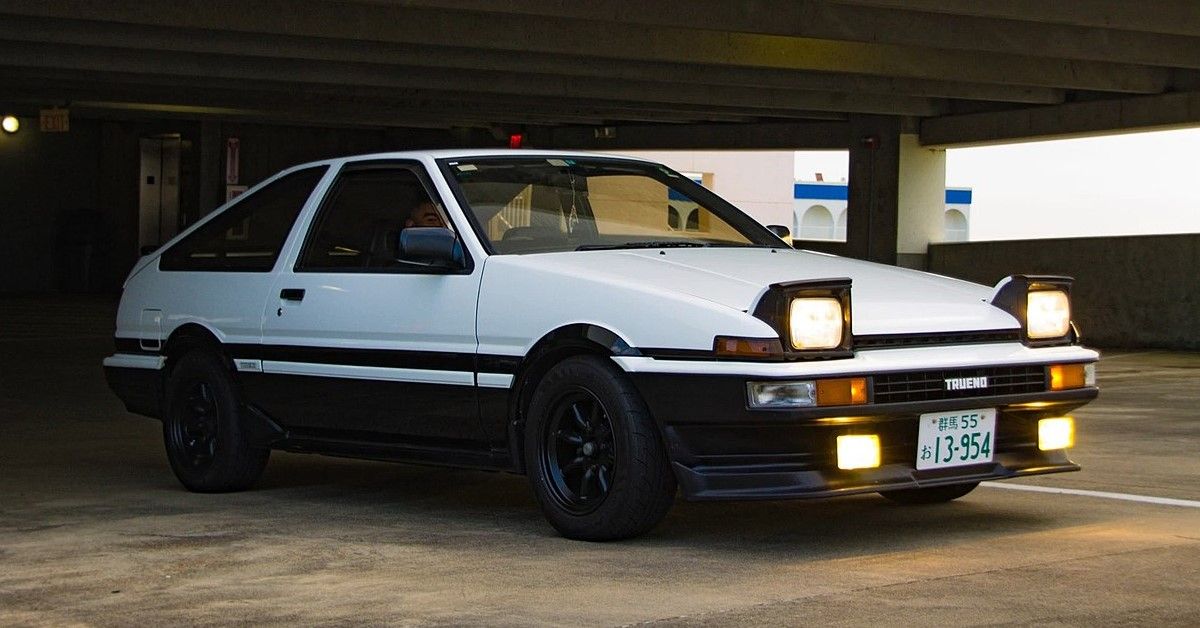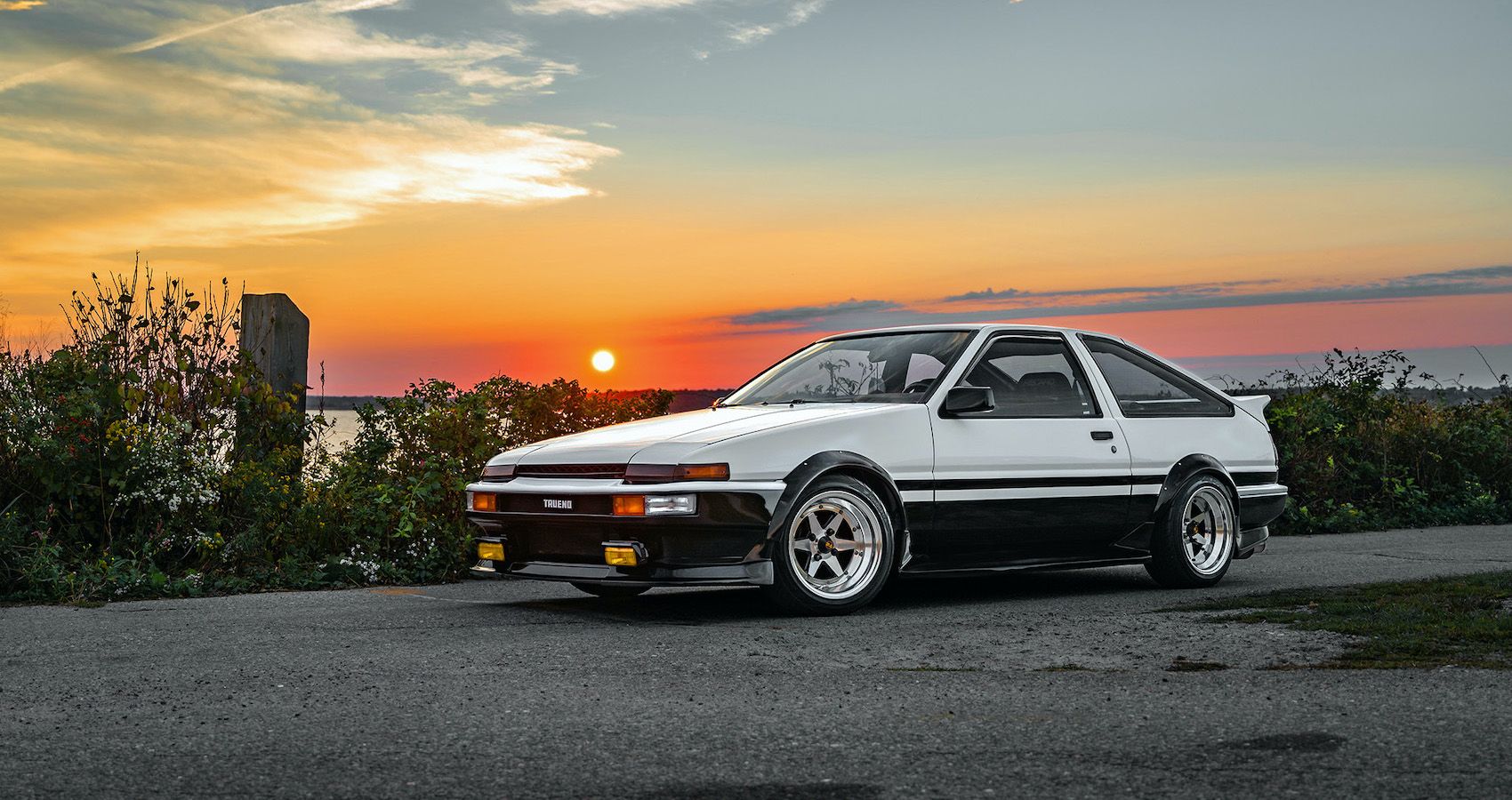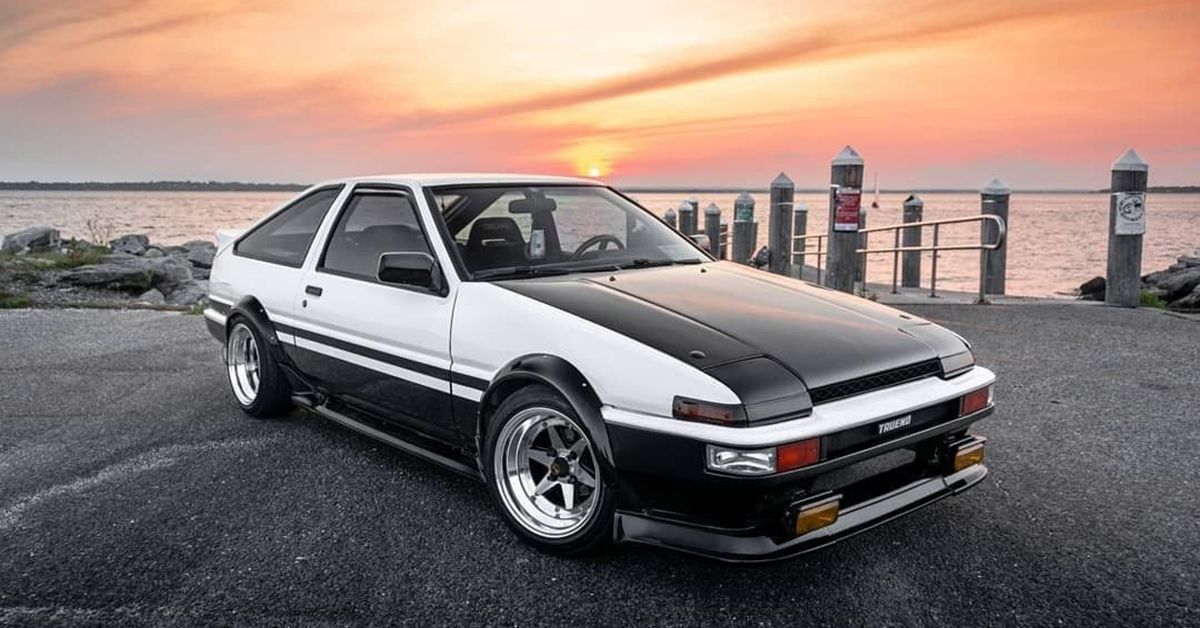If we ask you to tell us what is your favorite Japanese sports car, would you have your answer ready? If yes, we admire your commitment, as the competition is more than fierce. But while we may discuss whether one Japanese car is better or more influential than the other, some rides simply have indisputably-high significance and presence in the automotive industry. The Toyota Corolla AE86 is one of them.
This Japanese front-engine car with rear-wheel drive belongs to the fifth-generation Corolla (E80) but stands for more than just another sports variant from the '80s. The Toyota Corolla Levin and the Toyota Sprinter Trueno, the two models from the AE86 series, are iconic rides that achieved massive popularity with their lightweight bodies, balanced setups, and rear-wheel drives. The Toyota Corolla AE86 may not have been the most powerful Japanese car, but it was a car of preference for many racers and drift drivers — in real life and virtually.
Remember the Initial D, a Japanese street racing Manga series introduced in the 90s? The Toyota Corolla AE86 was in it, starring as the protagonist's delivery and drift car. Yet, this was far from the only appearance of the Toyota Corolla AE86 in popular culture.
Where else did the Toyota Corolla AE86 appear throughout the years, and what made it so favored and famous? Read on to learn more.
A Japanese Icon From The '80s: Exploring The Specs And Styling Of The Glorious Toyota Corolla AE86
The Toyota Corolla AE86, or Hachi-Roku (Japanese for eight-six), was only briefly in production from 1984 to 1987. However, its two variants, the Trueno (Spanish for thunder) and the Levin (Middle English for lighting), attracted quite a lot of attention, especially after the production ended.
As mentioned, the AE86 was not an extremely powerful car. It featured a naturally-aspirated inline-four engine with 128 horsepower and 110 lb-ft of torque. Although Toyota produced the engine in different versions and configurations, the power output was similar in most of them.
The good thing was (and still is) that these engines were highly tunable, which proved very useful for motorsport. Otherwise, most Toyota AE86 models got a five-speed manual transmission, optional limited-slip differential, MacPherson strut suspension, and similar. There was only a limited number of those with a four-speed automatic.
However, the lightweight body and rear-wheel drive probably made the Toyota AE86 appealing the most for motorsport. While in production, this car hit the Group A and Group N racing, proving particularly successful in rallying and circuit races. It was often on the track in Europe, leading or achieving victories in championships, such as the British Touring Car Championship in 1986.
Because of the rear-wheel drive configuration, light body, and good balance, the Toyota Corolla AE86 was also perfect for drifting. Therefore, Japanese street racers also often drove it through corners, the most notable being Keiichi Tsuchiya (or the Drift King), who made a significant contribution to popularizing the sport.
Finally, in terms of design, the Toyota Corolla Levin and the Toyota Corolla Sprinter Trueno were both available as coupes or liftbacks. While they had some minor differences, the most recognizable one was in headlight styling. The Levin had fixed headlights and the Trueno pop-up ones.
During the brief lifespan of the AE86, Toyota revised the initial body design only once, equipping the car with new tail lights, front and rear bumpers, and other minor components in 1985.
How The Toyota Corolla AE86 Became The Ultimate Initial D Car And Gathered An Admirable Fandom
The Toyota Corolla AE86 is most recognizable for its appearance in the mentioned Initial D anime and Manga series. Written and illustrated by Shuichi Shigeno (and supported by Keiichi Tsuchiya), the Initial D ran from 1995 to 2013 in 48 volumes, focusing on illegal Japanese street racing and drifting. However, most of the action happens in the mountain passes instead of city locations (though all places are factual).
So, where is our star Toyota Corolla AE86? In the protagonist's hands, of course. Takumi Fujiwara drives his father's AE86 Trueno GT-Apex Hatchback to deliver tofu and race. As the main character has exceptional driving and drifting skills, with the help of the 150-hp Trueno, he manages to defeat much more powerful cars, such as the Mazda RX-7 Type R and the Nissan Skyline GT-R V-Spec II.
But this is not the only appearance of the Toyota Corolla AE86 in this series. Fujiwara's friend and two opponents also drive variants of the AE86. Moreover, the car appears in the Initial D Arcade Stage series.
Considering the Initial D is one of the best-selling Manga series in history, it's no wonder the Toyota Corolla AE86's popularity only increased with the years. That's especially true for Sprinter Trueno with a white and black paint job and black alloy wheels because that's what Fujiwara drove to victory.




.jpg)